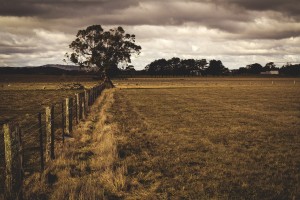Polyculture
 Polyculture is the practice of growing different crops in the same land. This can be done using multiple methods which can be companion planting, rotation of crops, and lane cropping. These practices can work on domestic or commercial farms or even in small home gardens.
Polyculture is the practice of growing different crops in the same land. This can be done using multiple methods which can be companion planting, rotation of crops, and lane cropping. These practices can work on domestic or commercial farms or even in small home gardens.
Growing diverse crops can maximize production and bring in profits. Though it requires a bit more labor, experience, and time, it is much more economical and a convenient advancement. It gives an ecological balance where byproducts can benefits each other.
Polyculture of Aquaculture and Land Farming
Integrating a fish pond with an agricultural system of crops can be one good example of Polyculture. This concept is originated by Chinese, who combined fish farming with livestock production and agriculture crops, which also includes vegetable farming. The feed is created by aquatic plants which are raised in canals, this helps to feed the fish.
Other good examples can be sugarcane and bananas which are grown with the involvement of fish farms. The leaves can be chopped directly to feed fish and also composted to be used in fertilizers. Several agricultural systems can be created around the fish pond such as livestock. The waste, left over and muck of animals can used to feed the plants which further can be fed to the fish. Fish Pond slit makes an excellent fertilizer for crops and can be used on the land crops.
Advantages of Integrated Agriculture Systems
 Fish Production serves the major purpose of economical feedstuffs with integrated aquaponic system.
Fish Production serves the major purpose of economical feedstuffs with integrated aquaponic system. - Its organic manure reduces the cost of chemical fertilizers.
- Profit increases by adding livestock, poultry, grain and vegetable farming in the equation as it supplements income for fish farming.
- Production of grain, vegetable, fish, and livestock products raises self- sufficiently in regard of food.
- The cost of fertilizers is greatly reduced due to silt from the ponds; increases the yield of crops at a lower cost.
With the growing population, there will be increasing demand for food and our agricultural lands will be constantly overtaxed to feed the extra population. There is only one way out, that is to produce more with our limited resources. This is what sustainability is really all about.
For more information on aquaponics and farming systems please contact our office at 303-495-3705 or Click Here to book a meeting with us. We’d love your feedback on our Facebook page or in the comment box below. We’d also appreciate it if you like our page.
Source: Nourish the Planet



